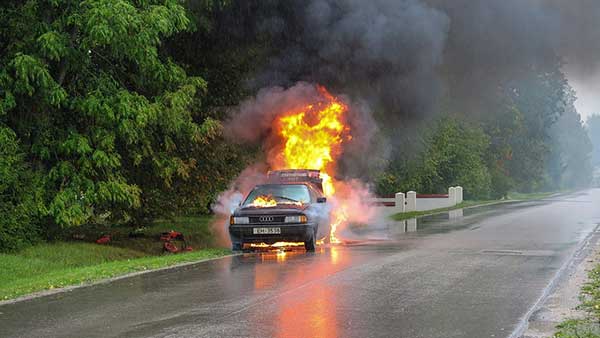Table of Contents
Car accidents can be life-altering events, leaving victims with more than just physical scars. In the United States alone, recent statistics report that over 5 million car accidents occur annually, often leading to not only significant injuries but also legal battles.
A car accident claim is not just about seeking compensation for damages; it serves as a punishment to the wrongdoer and a warning to others.
You can punish the at-fault party for their actions in the form of punitive damages. The purpose of punitive damage is to punish the at-fault party rather than compensate the victim.
Grasping the concept of punitive damages is crucial, as they can play a pivotal role in delivering justice and deterrence in the aftermath of a car accident. This article dives into the intricacies of when and how to claim punitive damages, ensuring you’re equipped with the knowledge to navigate this complex aspect of car accident claims.
What are Punitive Damages?
Punitive damages stand apart in the legal landscape as they are not primarily about compensating the victim. Instead, they are designed to punish egregious wrongdoing and deter similar misconduct in the future.
In contrast to compensatory damages, which aim to cover the victim’s losses (like medical bills and lost wages), punitive damages are awarded in cases of severe negligence or intentional harm. This distinction underscores their role: not just to remedy the harm done but to send a strong message against reckless or intentional misdeeds.
Criteria for Claiming Punitive Damages in Car Accidents
Legal Prerequisites
Pursuing punitive damages in a car accident case is more complex. It requires more than just proving the accident occurred. The claimant must demonstrate that the defendant’s actions were more than just negligent; they were egregious or intentional. This means showing a disregard for the safety of others, like drunk driving or road rage incidents.
Typical Scenarios
Common scenarios where punitive damages might apply include cases where the driver was under the influence of alcohol or drugs, engaging in illegal street racing, or intentionally causing harm. In such instances, the behavior goes beyond ordinary negligence, crossing into territory where the law seeks to punish and deter.
The Role of Negligence and Misconduct
While negligence, like distracted driving, may not always warrant punitive damages, intentional misconduct almost certainly does. The key lies in proving that the actions were not just careless, but rather, they were taken with a conscious disregard for the well-being of others.
The Process of Claiming Punitive Damages
Claiming punitive damages begins with filing a lawsuit, where evidence of the defendant’s egregious conduct is paramount. The process involves detailed documentation, from accident reports to witness statements, highlighting the defendant’s extreme negligence or intentional harm.

Legal representation plays a crucial role here. An experienced attorney can navigate the complexities of the legal system, advocate effectively for your rights, and present a compelling case for why punitive damages are warranted. Their expertise is vital in effectively pursuing such a specialized claim.
Challenges in Claiming Punitive Damages
Navigating the path to punitive damages is fraught with challenges. A common misconception is that punitive damages are easily obtainable in most car accident cases. However, the reality is far different.
The burden of proof lies heavily on the plaintiff, requiring a high standard of evidence to demonstrate the defendant’s extreme negligence or intentional misconduct. This often involves gathering comprehensive evidence that goes beyond the scope of standard accident claims, including detailed investigations and expert testimonies.
These stringent evidentiary requirements make securing punitive damages a complex and demanding endeavor, often requiring specialized legal expertise.
Real-World Examples and Case Studies
Landmark cases offer insight into the complexities of claiming punitive damages. For instance, in BMW of North America, Inc. v. Gore (1996), the Supreme Court underscored the need for punitive damages to be reasonable and proportionate, setting a precedent for future claims.
Another notable case is Anderson v. GM (1994), where a record $4.9 billion was awarded in punitive damages due to the company’s negligence. These cases teach two critical lessons: punitive damages can be substantial, reflecting the severity of the misconduct. And they are closely scrutinized to ensure fairness and proportionality in the justice system.
Conclusion
Understanding when and how to claim punitive damages in car accidents is crucial. These damages serve as a deterrent to egregious conduct and offer justice beyond compensatory measures. Navigating this complex legal terrain requires awareness and expert legal assistance, ensuring victims are rightfully compensated for their suffering.















